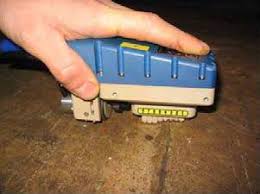Alternating Current Field Measurement (A.C.F.M.)
A.C.F.M. is an electromagnetic technique used for the detection and sizing of surface breaking cracks in metallic components and welds.
It and can be performed through paint and coatings, up to 5mm thick and combines the advantages of the alternating current potential drop (ACPD) technique and Eddy Current Testing (ECT) in terms of defect sizing without calibration and ability to work without electrical contact respectively.
The probe introduces an electric current locally into the part and measures the associated electromagnetic fields close to the surface. The presence of a defect disturbs the associated fields and the information is graphically presented to the system operator.
The ends of a defect are easily identified to provide information on defect location and length.
Some advantages of A.C.F.M. inspection include:
- Sensitive to small cracks and other defects
- Detects surface and near surface defects
- Inspection gives immediate results
- Equipment is very portable
- Method can be used for much more than flaw detection
- Minimum part preparation is required
- Test probe does not need to contact the part
- Inspects complex shapes and sizes of conductive materials
- Test through paint/non-conductive coatings up to 5mm thick ADD
In the proper circumstances, A.C.F.M. can be used for:
- Crack detection
- Material thickness measurements
- Coating thickness measurements

